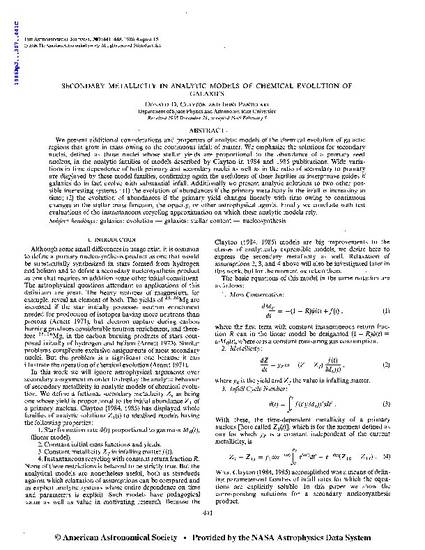
Analytic models of the chemical evolution of galactic regions that grow in mass owing to the continuous infall of matter are characterized, emphasizing the solutions for secondary nuclei (defined as those nuclei whose stellar yields are proportional to the abundance of a primary seed nucleus) in the families of models described by Clayton (1984 and 1985). Wide variations in time dependence of both primary and secondary nuclei as well as in the ratio of secondary to primary are displayed by these model families, confirming again the usefulness of these families as interpretive guides if galaxies do in fact evolve with substantial infall. Additionally, analytic solutions are presented for two other possible interesting systems: the evolution of abundances if the primary metallicity in the infall is increasing in time, and the evolution of abundances if the primary yield changes linearly with time owing to continuous changes in the stellar mass function, the opacity, or other astrophysical agents. Finally, test evaluations of the instantaneous recycling approximation on which these analytic models rely are presented.
